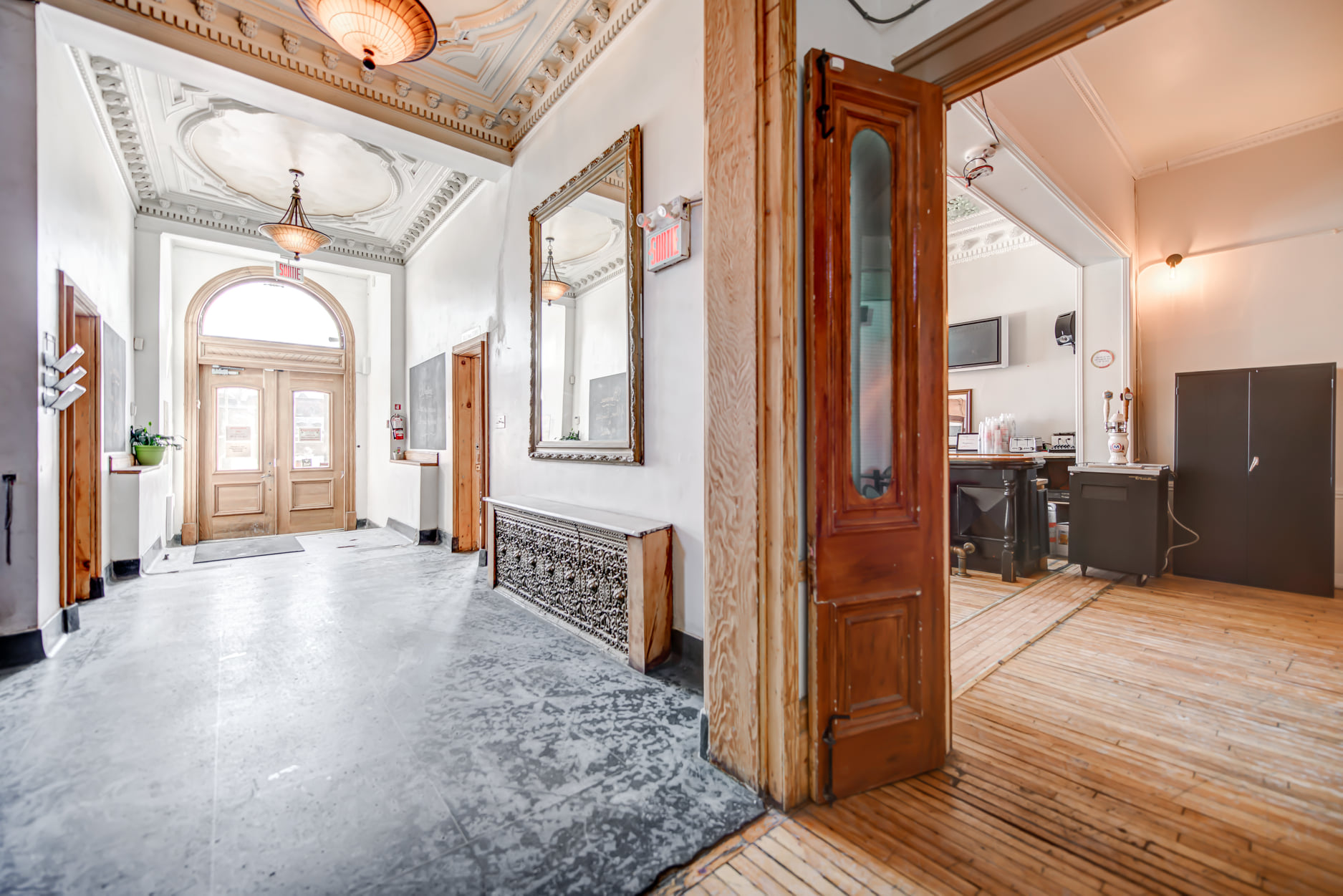In January 1902, the Union purchased a building at 55 Dubord Street (now Viger Avenue), just west of Saint-Hubert Street, to meet the growing needs of the organization. In 1908, the organization had to move because of the expropriation of land on Viger Avenue, between Saint-Hubert and Labelle Streets, for the construction of the École des Hautes Études Commerciales, the building that today houses the National Archives in Montréal of Bibliothèque et Archives nationales du Québec (BAnQ). It then moved to its current location at 429 Viger Avenue East, the former home of shipowner, businessman and politician Jacques-Félix Sincennes.
The new location allows the Union to meet all of its needs and to increase the number of beds in its shelter from 6 to 50. According to data compiled by the organization, “between 1915 and 1951, 7591 French people were admitted to the shelter.” At the turn of the 1950’s, “the humanitarian mission of the Union Française gradually faded away to make way for more diversified activities” focused on culture, entertainment, networking and formation, among others, for French nationals and Francophones in the metropolis. It was in response to this desire for diversification that the Union built “between 1955 and 1980 […] the auditorium located at the rear of the main building.” Today, the Union française continues its mission to offer a place where the French community can come together with a strong associative, social, solidary and cultural life, directed towards all Montrealers.
Source : Site internet de l’Union française de Montréal
History of the Jacques-Félix Sincennes house
The Union Française, after several moves, settled in 1908 in the house built in 1867 for Jacques-Félix Sincennes (1818-1876), shipowner, businessman and politician born in Deschambault on January 7th 1818.
The house was built on the land that Sincennes purchased the same year from architect Victor Bourgeau. The architect who designed the residence was Henri-Maurice Perrault, who among other things contributed to the design of Montreal’s City Hall and the stores of the Hôtel-Dieu des Religieuses hospitalières de Saint-Joseph in Old Montreal, buildings that can still be seen today. This house is reminiscent of the Second Empire style, in harmony with the bourgeois character of the houses that surrounded Viger Square, a place of greenery and pleasure gardens in a tight urban fabric that became a social venue for the French-speaking bourgeoisie in the second half of the 19th century.
Following Sincennes’ death, the residence was occupied by Louis-Adélard Senécal, Liberal member of the Legislative Assembly for Yamaska from 1867 to 1871 and Liberal member of the House of Commons for Drummond-Arthabaska from 1867 to 1872.
Sources :
Website of the Union française de Montréal (in French)
Website of the Biographical Dictionary of Architects in Canada 1800-1950, notice about Henri-Maurice Perrault
Website of the Dictionnaire biographique du Canada, volume X (1871-1880), notice about Jacques-Félix Sincennes (in French)
MARSAN, J. (2016) Montréal en évolution. Quatre siècles d’architecture et d’aménagement. 4e édition. Presses de l’Université du Québec
PINARD, G. (1987) Les résidences. Répertoire d’architecture traditionnelle sur le territoire de la Communauté urbaine de Montréal. Service de la planification du territoire de la Communauté urbaine de Montréal. p. 646-647
Current status
The former Sincennes House, home of the Union française de Montréal, is currently in need of extensive renovation to restore its original luster and the full potential of its interior spaces. The high cost of maintenance and the difficulty of raising the necessary funds to carry out the work have forced the organization to condemn the top two floors of the building as a safety measure for the occupants. This situation not only limits the capacity to accommodate organizations near the Union’s mission, but may ultimately pose a threat to the integrity and health of the building as a whole. However, the French Union is working hard to protect this rich architectural heritage; for example, the two statues at the front of the building, representing the Marianne and Jeanne d’Arc, were completely restored in 2020 by the firm DL Héritage and thanks to the contribution of generous donors during a socio-financing campaign.
In 2023, the Union française de Montréal applied for a minor variance from the borough to authorize the building’s expansion. This request was approved in July 2024. With this project, the organization aims to rehabilitate the building, refresh its image, engage its members, and attract new partners to ensure the sustainability of its mission. As of 2025, the Union française de Montréal is still seeking funding to bring its project to fruition.





